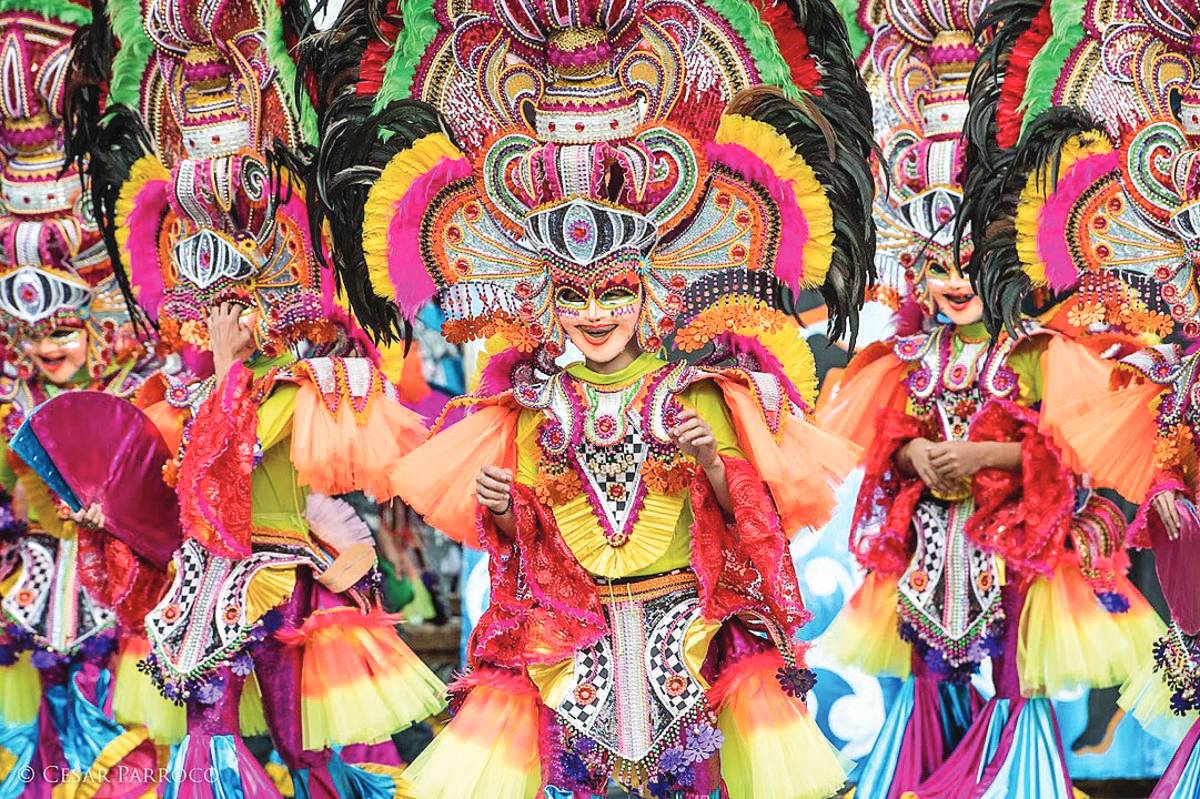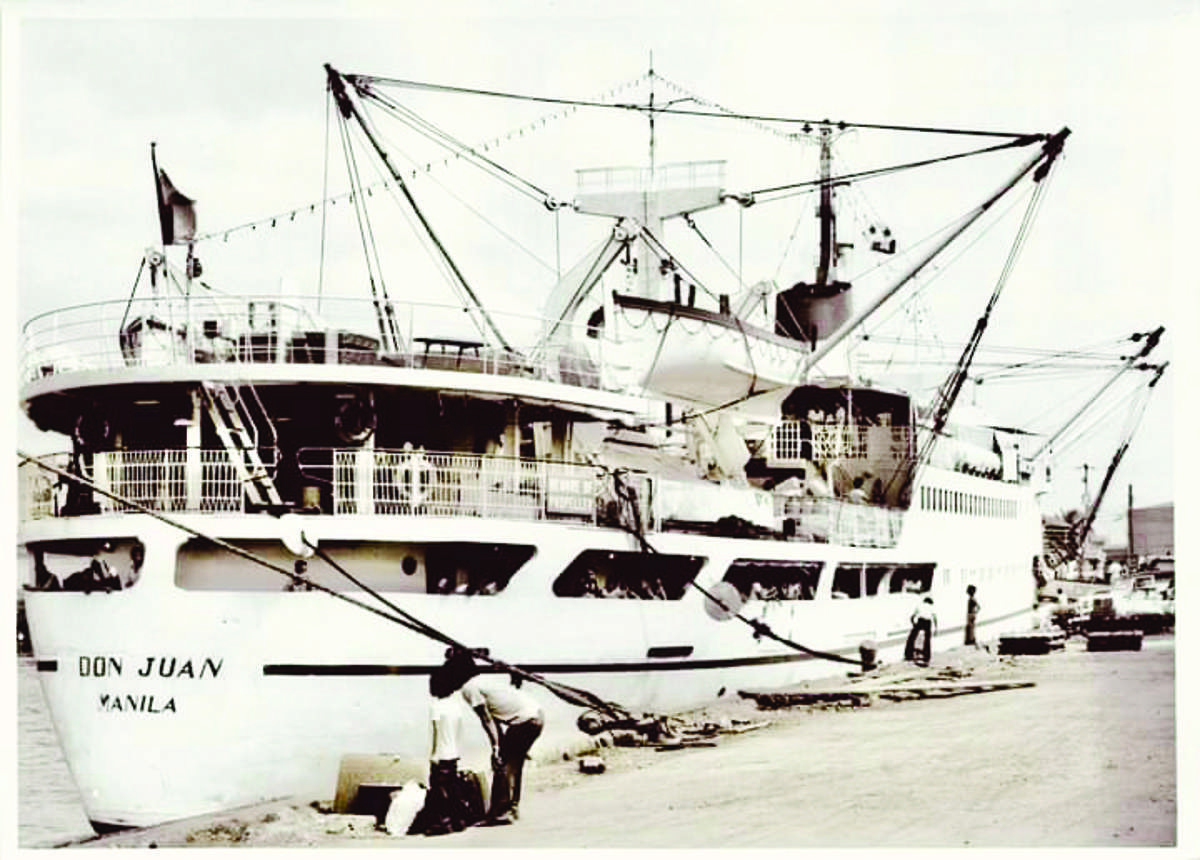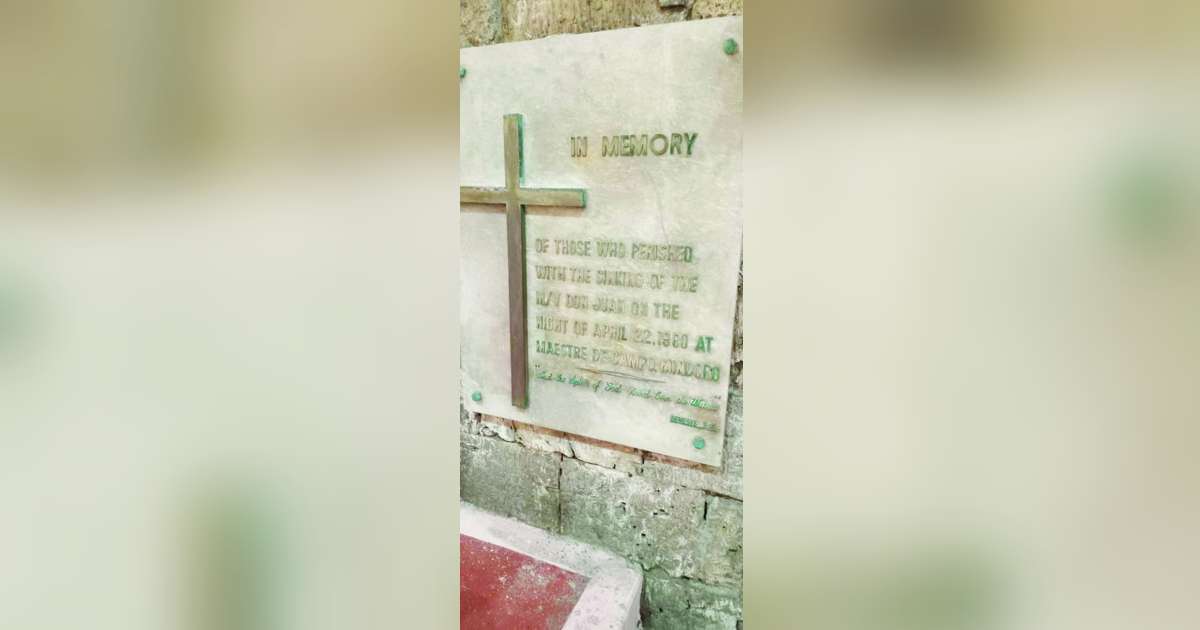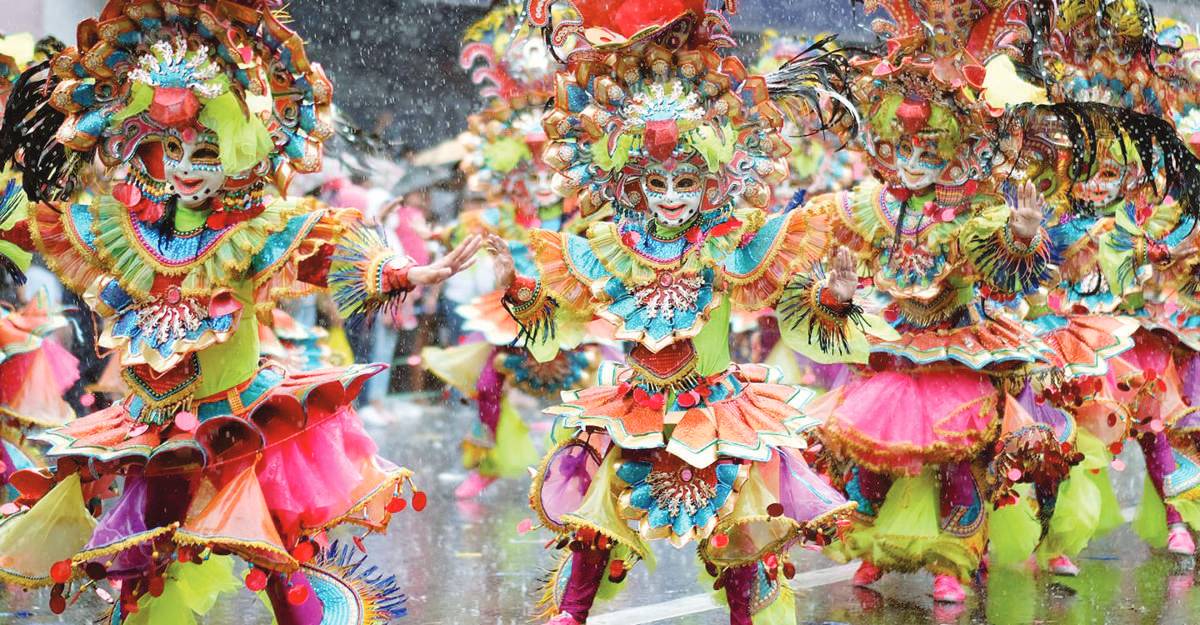
By Dominique Gabriel G. Bañaga
As Bacolod City gears up for the annual MassKara Festival, it’s essential to reflect on the deeper layers of its history.
Beyond the colorful masks and joyful parades lies a somber chapter from the past — the tragic sinking of M/V Don Juan on that fateful night of April 22, 1980.
The tragedy, which left many lives lost, was etched into the memory of the Negrenses, one that cannot be forgotten.
The M/V Don Juan

The M/V Don Juan was then a symbol of luxury and convenience, offering a lifeline between Manila and the Negros provinces.
With a crew dedicated to ensuring passenger comfort, the Don Juan was more than just a vessel — it was a home on the sea, a connection between loved ones and a testament to human ingenuity.
In his research, Mike Baylon, founder of the Philippine Ships Spotters Society, said the Don Juan was a source of pride for the region, with its speed and size making it the flagship of the now-defunct Negros Navigation.
The ship was built by Niigata Shipbuilding & Repair Inc. in Niigata, Japan in 1971. It was launched on June 25, 1971, completed and delivered three months later.
This liner was actually a longer and more powerful sister ship of the earlier Dona Florentina (launched in 1965) and the Don Julio (1967). The three were cruiser liners, which meant they were not roll-on/roll-off ships and had cruiser sterns.
The M/V Don Juan had a steel hull with a raked stem, two masts, two passenger decks, and an amidships smokestack.
The ship’s original passenger capacity was 740, but it was later renovated to accommodate around 810 passengers, one of the highest then.
It was also one of the most technologically advanced in the Philippines during that time, equipped with radar, fire and smoke detectors, and automatic warning devices.
Just as described, the M/V Don Juan was comparable to a holiday cruise ship as it has dining rooms, air-conditioned first-class accommodations, cabins, lounges, and dining salons.
For general entertainment, passengers can enjoy watching videotapes played on television sets in the dining rooms. Board games were also available while on the ship, and there were sun decks and lounging spaces for passengers who may want to see the seascape during the voyage.
Don Juan sailed from Manila twice a week on Tuesdays and Fridays, for the Manila-Bacolod-Iloilo and Manila-Iloilo-Bacolod routes.
The vessel was also fast at that time. It could take 18 hours of travel from Manila to Bacolod or Iloilo.
According to Baylon, Don Juan regularly departed the Manila North Harbor’s Pier 2 at around 1:00 p.m., and it would arrive in Bacolod at around 7:00 a.m. the following day, and in Iloilo before noontime.
The tragedy

On Tuesday night, April 22, 1980, while on a Manila-Bacolod voyage, the M/V Don Juan was rammed by M/T Tacloban City, a Mariveles-built tanker by the Philippine National Oil Company (not to be mistaken for another passenger vessel owned by a rival ferry company).
Based on accounts, the collision took place off the beaten path.
The collision took place off the southwest tip of Maestre de Campo Island, presently known as Romblon province’s Concepcion town.
According to Baylon, the vessel was off the course from the usual shipping route heading to Bacolod.
Baylon said during that time, vessels heading for Bacolod City usually pass east of Maestre de Campo Island.
He further added that the vessel was doing a “fast clip” after leaving Manila at around 1:00 p.m. of the same day, which means that the collision happened around 10:00 p.m.
Baylon noted that since the vessel was out of the route, the chances of an immediate rescue lessened.
He checked the schedules then, and there were no other ferry or container ships sailing when the collision occurred.
“Reports say it sank within 10 to 15 minutes. No time to get life jackets or organize evacuations. In collisions where the hull was ripped, and that was the reason it sank very fast. There would be water soon in the auxiliary engines that power the lights,” Baylon said.
He noted that the sea current in Tablas Strait, connected with the exchange of water current between the Indian and Pacific Oceans, means that even if everyone is on a life jacket, there is a possibility they will drift away from the collision area.
Tragedy remains fresh
The M/V Don Juan sinking tragedy remains fresh in the memory of the survivors and the relatives of those who lost their lives on that fateful day 43 years ago.
It was a disaster for Bacolod and Negros Island, as most passengers included families or members of prominent figures in Negros.
The ship was also full of Negrense students who had recently graduated from the top universities in Manila and were returning home to spend the rest of the summer days with their family before beginning their new lives.
Among those who died in the tragedy include the Alunan family, the mother of lawyer and incumbent Bacolod Councilor Renecito Novero, and the family of former Bacolod Mayor Jose Montalvo.
Montalvo lost his wife, Nora, and two of their daughters, Mylene and Yvette, as well as his mother-in-law, Anicia Kilayko.
Montalvo was reported to have been so distraught that he even traveled as far as Romblon and Oriental Mindoro to look for his missing family.
Commodore Dannyl Yap, 618th squadron commander of the Philippine Coast Guard Auxiliary, was one of the relatives of those who lost their lives in the tragic incident.
Yap was only six years old when he lost his mother in the tragedy.
Although far from the ship when the disaster struck, his life was forever marked by his mother’s loss.
When he shared his story, it mirrored the collective pain and grief experienced by the families of those who perished, which carries on until today.
He recalled the shock and the uncertainty that enveloped his family.
He was at his grandmother and uncle’s home in Negros Occidental’s Pontevedra town when he heard the news over the radio.
Yap’s mother was returning home to Negros after serving as a high school teacher in Olongapo City, with his grandmother and two cousins.
“Ang lola ko, hambal niya nagbulig pa ang akon iloy tungod nga kabalo ‘to siya maglangoy,” Yap said.
He said his grandmother survived the tragedy after she was rescued by a small boat.
“Si lola ko ya survivor, tungod naglumpat siya sa tubig. And while nga pakadto siya sa dalom, nangamuyo siya, ‘Diyos ko, may kabataan pa ‘ko.’ That is the word nga indi ko gid malimtan sa akon nga lola,” he said.
His mother’s remains were later recovered by the authorities.
He also recalled an incident wherein confusion arose between his family and another victim’s relatives during the claiming of the remains.
Commodore Yap said the matter was resolved quickly as Pontevedra municipal officials also arrived in Iloilo to claim the remains of other town residents who died in the tragedy.
In the words of Commodore Yap, “human error is more dangerous than mechanical error.”
Yap’s experience, like that of so many others, serves as a reminder of the profound impact the M/V Don Juan tragedy had on the lives of those left behind.
It’s a shared grief that unites the community in Bacolod, not just as survivors but as those who bear the legacy of the past.
Triumph over adversity

The MassKara Festival, as Commodore Yap explains, is not a direct commemoration of the tragedy itself.
He believes the festival is a celebration of life and a testament to the ability to bounce back from adversity.
It represents the triumph over difficult times, including the economic hardships faced by Negros in the 1980s.
The festival is a symbol of resilience, unity and unwavering smiles.
This annual celebration is a testament to their strength and determination to turn their pain into positivity.
The sinking of the M/V Don Juan also reminds us of the fragility of life and the importance of cherishing every moment.
It teaches us to honor the past while celebrating the present.
The MassKara Festival is not about commemorating what was lost, but rather about reveling in the vitality of every Bacolodnon.
We must take this wisdom to heart as we remember the tragedy while rejoicing in the spirit of the MassKara Festival.
This annual celebration serves as a reminder that, in the face of adversity, the Bacolodnons continue to smile and embrace life, turning their sorrow into strength.
The MassKara Festival symbolizes their resilience, celebrating life even in the face of adversity./DGB, WDJ
